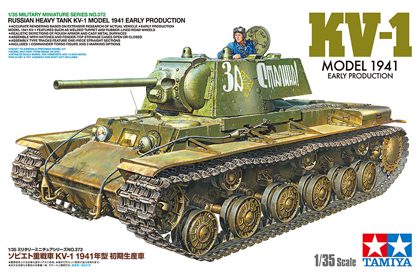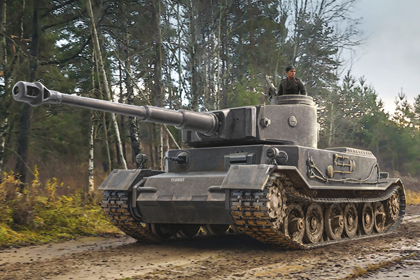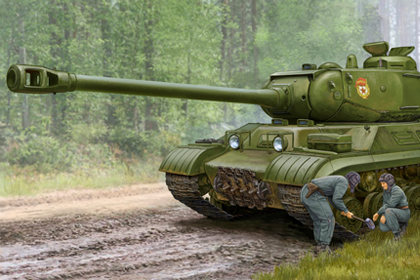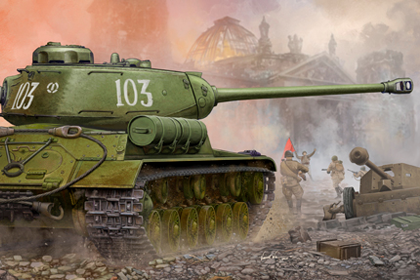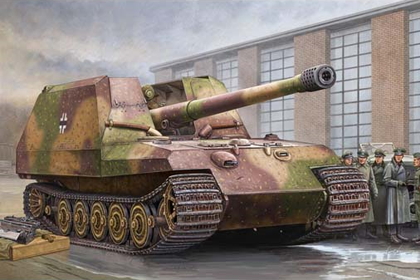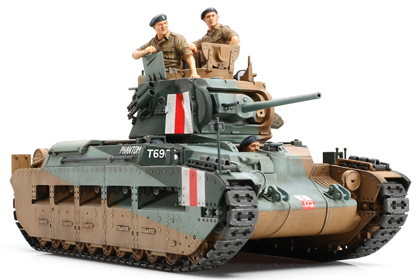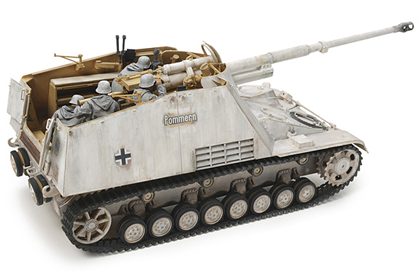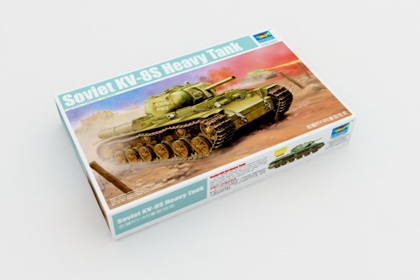This is the Tamiya 35 375 kit in 1/35 scale, of the ‘Russian Heavy Tank KV-2’.
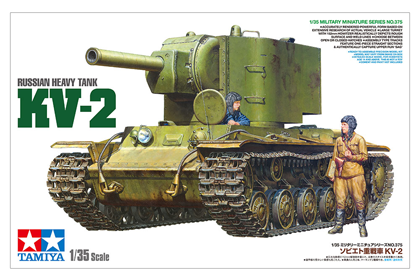
History
In December 1939 the KV-1 was officially adopted by the Soviet military; it was followed by the KV-2, a heavier design based upon the KV-1 chassis, but upgunned to a 152mm howitzer with the intention of breaking enemy strongholds.
In order to accommodate the larger gun, the KV-2 was given a remarkably tall turret. Around two hundred were produced, and supply to the military began in July 1940.
The following June, Nazi Germany invaded and the KV-2 – while suffering a number of breakdowns – took part in Soviet resistance against the invaders, their 152mm guns and impressive survivability enabling some amazing feats, helping stem the tide.
Source: Tamiya website
